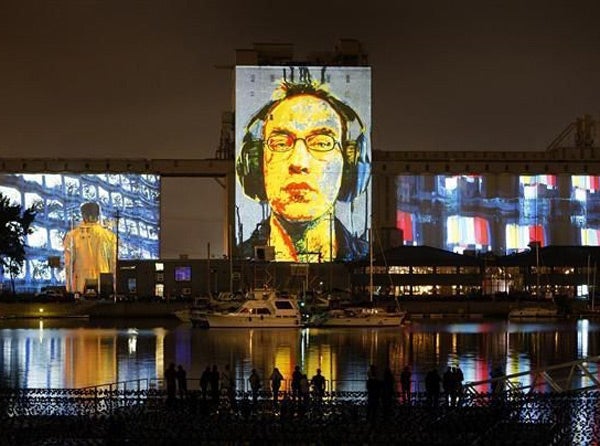Even at the age of 400, Quebec's still young at heart
Celebrated as an olde worlde outpost of France, this city is far more modern than it seems at first glance, says Sarah Barrell

Your support helps us to tell the story
From reproductive rights to climate change to Big Tech, The Independent is on the ground when the story is developing. Whether it's investigating the financials of Elon Musk's pro-Trump PAC or producing our latest documentary, 'The A Word', which shines a light on the American women fighting for reproductive rights, we know how important it is to parse out the facts from the messaging.
At such a critical moment in US history, we need reporters on the ground. Your donation allows us to keep sending journalists to speak to both sides of the story.
The Independent is trusted by Americans across the entire political spectrum. And unlike many other quality news outlets, we choose not to lock Americans out of our reporting and analysis with paywalls. We believe quality journalism should be available to everyone, paid for by those who can afford it.
Your support makes all the difference.A breaching whale is not an uncommon sight in coastal Canada. But this one blows spume high above the city of Quebec, so there is a collective intake of breath from the thousands of spectators gathered along the waterfront.
This is no wildlife display. We are in the heart of the city and the whale is the animated creation of Quebec's renaissance man, Robert Lepage. One of the most anticipated highlights of the city's current 400th birthday celebrations, Lepage's The Image Mill is a 40-minute movie-cum-sound-and-light show (plus smoke and water), which uses the port's grain silos as a 600m- long, 30m-high screen.
A tribute to the tumultuous history of this unique French-speaking North American nation, this spectacle is also a perfect illustration of how Quebec City lives in the present. That's not what you'd think at first glance. The port's cobbled streets and stone houses crop up in countless North American-made costume dramas, doing a fine impression of an antique France. Then there are the numerous old churches, seminaries and provincial capital buildings of the Upper Town, a Unesco-listed walled city that sits grandly on a precipice above the docks.
You'd think Quebec was a living museum, and to a great extent it is. But this is also a place where people like Lepage produce The Image Mill. Picture the Tate Modern, three times the length, used as a giant screen for Terry Gilliam's latest short and you might have some idea of how this particular piece, billed as the world's largest ever architectural projection, is unprecedented.
Preparations for the 400th birthday got started at the turn of the millennium, producing a party budget of $90m (£45m). That may seem like a lot of dosh to celebrate the founding of a city but this is where, as far as European interest goes, Canada began. French explorer Samuel de Champlain arrived here in 1603, succeeding where his pioneering countryman, Jacques Cartier, had failed 70 years before, in establishing the first permanent European settlements at Port Royal in 1605 and Quebec City in 1608.
It may be capital of Canada's largest province (also called Quebec), and an autonomous one at that, but Quebec City had latterly come to be somewhat regarded as a provincial outpost of colonial France, preserved in aspic – a small government city that had little of Montreal's fresh vibrancy or Toronto's business bustle.
Yet, over the past decade or so, the city has blossomed. An additional $70m has been invested in municipal projects that have reclaimed inaccessible areas of the waterfront, rerouted highways and created parks. "We've sort of pushed back the grey to bring back the green," says Helen Sauvageau from the Quebec 400 festival. "It's about giving the city back to the people who gave birth to it."
This sentiment is one I find at the forefront of Passengers, an exhibit at Espace 400, a swanky new exhibition space in the Old Port. Here, patrons collect a suitcase and plonk it down on various airport-style carousels to activate storytelling holograms, each with its own personal, culturally diverse tales of immigration to New France.
Much of the anniversary events pay tribute to the city's francophone history but, like Passengers, the story of modern Quebec is a multinational one. The latest hip neighbourhood, Saint-Roch, is a testament to the constantly changing tides of immigration. Home to everyone from Irish shipbuilders to Chinese traders, its grand "monumental" style buildings had fallen into disrepute. Today, largely thanks to the fact that the city removed the roof covering the street, you don't come here to buy drugs but Hugo Boss clothing and arty books.
Of course, folksy Quebec can still be found in the more tourist-trampled part sof town, within the realm of Chateau Frontenac, the fanciful castle crowning the city, now a landmark hotel. But just down the road, along the port's cobbled streets, smart boutique hotels have sprung up in revamped dock houses.
The fairy-tale chateaux and gleaming tin mansards of the grand old mansions still bring in the older American tourist by the bus load, but now younger Europeans are coming too, curious about the diverse art and culture that this city is celebrating with unique style.
Join our commenting forum
Join thought-provoking conversations, follow other Independent readers and see their replies
Comments